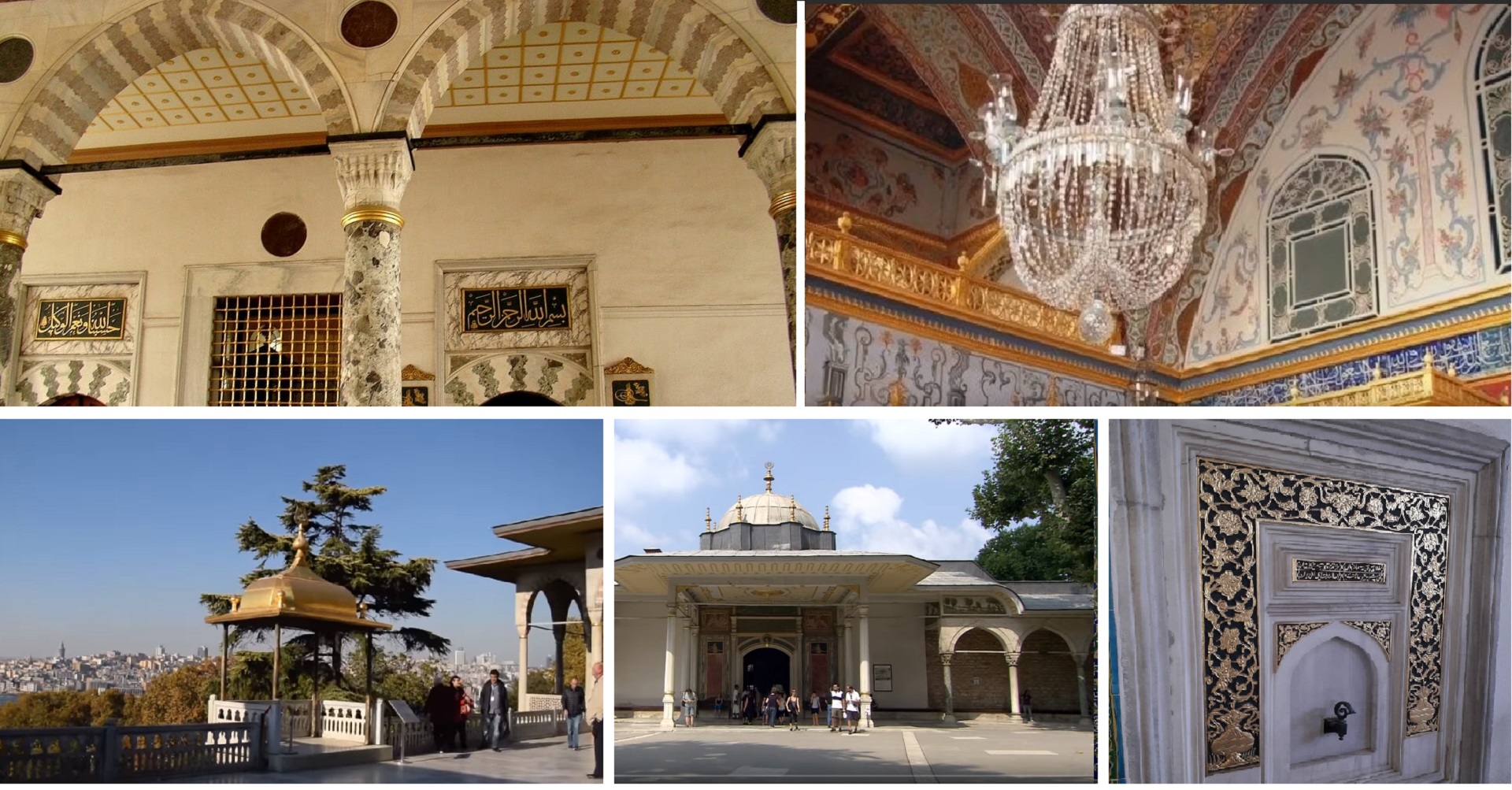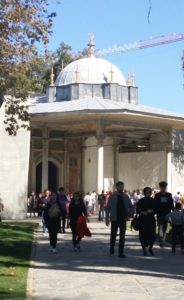Third yard
The third courtyard is entered through a gate called the “Gate of Fortune”, below which the Sultan would sit on ceremonial occasions when the pay was given to the janissaries. The third courtyard was reserved for the private life of the Sultan.
The third courtyard housed rooms for the sultan’s private life: Harem, Larder, Treasury (according to some sources, the Treasury), and the War Room, the elite Enderun School.
A large number of the most influential statesmen came from the Enderun school, which was located in the third courtyard, while even from the harem for some time even managed the Empire.
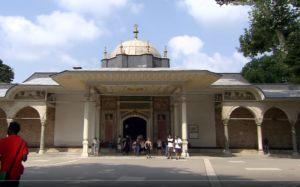
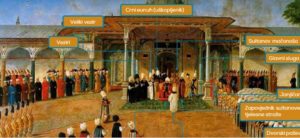
The students of the Enderun school were boys, who were brought to the empire with a foreign policy. This school served not only children from the palace, but other gifted children, even if they were brought in as slaves. White eunuchs who were among the best students at Enderun School. Devshirm is first mentioned during the reign of Sultan Bayazit I (1389-1402), but it is known that the law on it was introduced during the time of Sultan Murat II. (1421-1444 and 14446-1451). Under the law, the state was able to take one boy of a certain age from Ottoman non-Muslim subjects. The students of the school were closest to the sultan, which brought them power, more importantly, they formed a network through which the sultan could make certain changes in the administration of the court, ie. he could appoint people who were independent of the influence of the grand vizier.
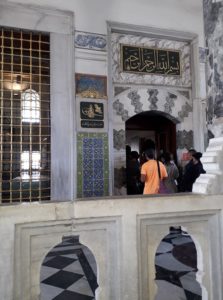 This elite school could be attended by sons of grazers and viziers, as well as children who were brought from Christian lands that were talented. Later, they had the opportunity to get the highest positions in the country, even earning the title of first vizier. The Enderun School students are also important in spreading court culture throughout the empire. When completed, they were sent to the provinces for service, thus spreading the culture, whether it be art, behavioral patterns, or any other aspect of life.
This elite school could be attended by sons of grazers and viziers, as well as children who were brought from Christian lands that were talented. Later, they had the opportunity to get the highest positions in the country, even earning the title of first vizier. The Enderun School students are also important in spreading court culture throughout the empire. When completed, they were sent to the provinces for service, thus spreading the culture, whether it be art, behavioral patterns, or any other aspect of life.

The Ottomans were very sympathetic to other cultures and creeds, showing that in the areas they conquered allowed people to continue to live their customs and maintain their religion. They did the same in their home. Each slave, coming to a prominent man in the house, could advance, study, or marry or marry his master. Many freed their slaves, allowing them to live as free men and to return to their native land if they wished. If they were well off where they were, they showed that despite all the freedoms they would still remain where they were.


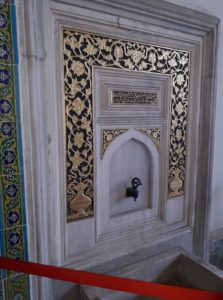
It can be said that the credit for the cosmopolitan character of the Ottoman Empire also belonged in part to the devshirma, at least while it was being implemented, in part by bringing women from different parts of the world, who were not of Turkish origin, and were mothers of the Sultans.
The harem was the room in which decisions relevant to the future of the Empire were made
Harem
 In the second courtyard on the left was Harem. The harem was not where the sultan could engage in debauchery, as is commonly thought. In reality, these were imperial family chambers, and every detail of life was regulated by tradition. The word ‘harem’ literally means ‘private’. Anyone except the sultan and his family who entered the harem would be executed. One poet wrote – If the sun were human, he would even be forbidden from looking into the harem. “Harem – an empire of luxury and lost hope …. The mother (valid-sultan), sisters, daughters and heirs (shahzade) of the sultan, his wife (kadyn-efendi), favorites and concubines (odali, slaves – jarias) lived there. 700 to 1200 women could live in the harem at the same time. The inhabitants of the harem were served by black eunuchs.
In the second courtyard on the left was Harem. The harem was not where the sultan could engage in debauchery, as is commonly thought. In reality, these were imperial family chambers, and every detail of life was regulated by tradition. The word ‘harem’ literally means ‘private’. Anyone except the sultan and his family who entered the harem would be executed. One poet wrote – If the sun were human, he would even be forbidden from looking into the harem. “Harem – an empire of luxury and lost hope …. The mother (valid-sultan), sisters, daughters and heirs (shahzade) of the sultan, his wife (kadyn-efendi), favorites and concubines (odali, slaves – jarias) lived there. 700 to 1200 women could live in the harem at the same time. The inhabitants of the harem were served by black eunuchs.
The women brought to Harem must have come from other countries and other faiths because it was forbidden to enslave Muslim women. The girls were either bought as slaves (often sold by their parents), or were gifts from royalty. After being brought to Harem, they would be educated in the spirit of Islamic faith and tradition, learning Turkish. They were also taught art, dressing, reading, writing, bonding and dance. The training lasted for years, only then they would wait for the sultan’s mother to attend and finally – if they showed sufficient ability and were beautiful enough – to appeal to the sultan himself. Most of the girls were not so fortunate to meet the Sultan, so they were married outside the palace, mostly for distinguished citizens who left the court to go off duty. Just like the young men who had been assigned administrative functions in the Outer Court (Enderun) in the External Service (Birun), so were the women of the harem, some of whom were the Sultan’s darlings, who had once married clerks from the palace. This is also indicated by an interesting inscription above the door of the harem: “God, who opens the door of the good, open the door of the good for us as well.”

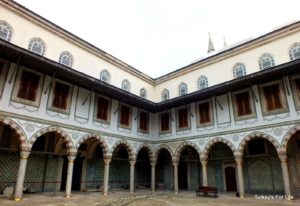
The rooms of the Sultan’s beloved
An interesting fact is that none of the mothers of the Turkish sultans were Turkic or born as a Muslim, as was not necessarily a lawful woman according to Sharia. They were all of Greek, Bulgarian, Serbian, Russian, Venetian and French origin, later converting to Islam. The Ottoman dynasty did not observe primogenicity (the right of the firstborn son to the throne), so that the throne was, in principle, accessible to every imperial son and slave son. A mother in Islam is three times more important than her father. Every woman in Harem tried her best to proclaim her son heir to the throne, to secure herself the role of Valida Sultan.
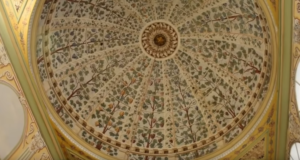

Rooms of Valide sultan’s beloved

Life in Harem was not easy, in the morning the girls went to prayer, breakfast and school. They were taught the art of seduction, Oriental dancing, languages, calligraphy, court etiquette, sewing, music and religion. In the particularly lavishly decorated chambers of Harem was the mother of Sultan Valide Sultan, who operated the harem. It was called the Valide of the Sultan, it had 40 rooms of its own, a courtyard for walks and many servants. She was deciding which of the slaves to present to her son, the Sultan. Women who would give birth to sons would gain a great reputation and splendor in the palace.
There was almost no place where the difference in intelligence, giftedness, beauty and health had as much impact on a person’s life as there was in a harem, in which a developed system of intrigue among rivals was constantly present. Namely, the sultans of mother and wife were mostly not sympathetic to one another. In order to gain power, they did not despise anything, or even reach out to one another.
The mothers of the Ottoman princes fought most fiercely to secure power for their sons and themselves. They bribed women in the palace (gold, jewels) to trick them or bring them some useful news from their rival, which would be able to blacken her in front of the sultan. It was a struggle for their survival, not just them but their sons. The son of their rivals was a threat to their sons’ lives. This rivalry is actually imposed by the natural survival instinct that every mother carries within herself to protect her child.

The cause of this was the Brotherhood Law passed by Mehmed Fatih, it was legitimate for a new Sultan to kill even underage brothers in order to preserve power. The law states: For the sake of the welfare of the state, one of my sons, to whom God gave the Sultan’s authority, may lawfully execute his brothers. This practice was cruel and contrary to Islamic principles. The meaning of Sharia is to preserve peace and overcome evil, but not in a Machiavellian way – “The goal justifies the means.” In the Qur’an, it says, “If one kills someone who has not killed anyone, or one who does not make a mess on Earth – it is as if he has killed all men; and if one causes one’s life to be preserved – it is as if all people have been saved. ”

Although the citizens of Istanbul were appalled by the executions of young children, Sultan Mehmet III made a horrifying killing of 19 brothers, whose taboos he had broken in front of the palace, many of whom were younger than his children. One contemporary historian described the event as follows: angels in heaven heard the sighs and moans of the inhabitants of Istanbul. Since then, because of public pressure, the princes were not sent to the provinces, as Ozy explained, (the power was given to the first to arrive in Istanbul on the news of the Sultan’s death, which necessarily meant killing the other brothers), but only the eldest son would be sent to the province, and the other princes were imprisoned in Kafes, a building near the harem, awaiting their fate in fear. Later, the execution of the brothers was not immediately effected with the arrival of the new Sultan in power, but only when there was a threat to seize the throne.
The princes were forbidden to leave the cafes and have offspring. Living in constant fear of execution, most of them suffered from mental disorders. When summoned by Suleiman II (1687-1691), he sobbed in front of the Porte dignitaries who had come to escort him out of the café as his entourage: “If I am commanded to die, just tell me, let me do the namaz, then carry out your order. ” I have been in captivity since I was about forty years old, it is better to die at once than die a little every day. What a horror we are suffering with one breath. ”They struggled to get him out of the cafe and set him on the throne.
Until the 16th century, the Sultan’s Harem was located in the old palace, which now houses the University of Istanbul. Topkapi was the official palace where state affairs were decided, until sultan Hurem persuaded Sultan Suleiman to allow her to settle in Topkapi. Later, the harem expanded and turned into a large complex consisting of several hundred rooms. The entrance to the harem is a small door next to the imperial sofa. This was called the Carriage Gate because women of the Sultan’s family would return from the summer palaces by wheelchairs and then enter through that door. Consisting of only a few buildings in the fifteenth century, the Sultans gradually developed a harem that included about 300 rooms, nine hamas and two mosques in later years. With this, the center of power moved the inner part of the harem, and instead of the students of the Enderun school of white eunuchs, the harem and black eunuchs took over. The whole situation led to a further division of power in the empire and a deepening of internal instability. Later, the sultans gave power to the great viziers, and women found their way into power by bribing and inciting the viziers and other high-ranking statesmen on the basis of their loyalty and merit.


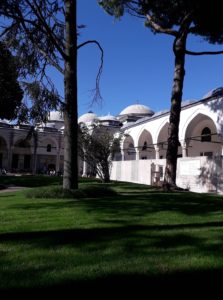

Some women of the Sultan had a very great influence in the palace and in their husbands, but also in domestic and foreign policy. For the sake of such women, the entire period of Ottoman history is called the Kadinlar Sultanati, which means the time of women’s rule. These women were the sultans of Hurem, Nurbanu, Safiya and Kosem of the sultanas.
The most beautiful harem room is the Imperial Hall. This room shows a tapestry of different styles; from the dome of the sixteenth century, to the blue and white tiles of the seventeenth century.
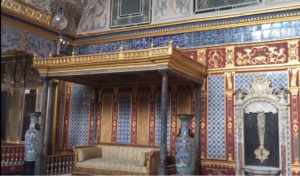
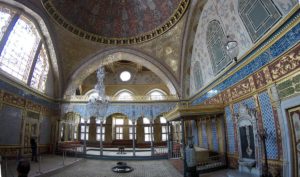
Imperial rooms in harem
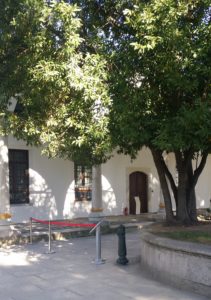
Notable in Harem are Sultan Selim II, who drowned in the bathroom after drinking too much champagne, then İbrahim crazy, who fell ill after his brother Murat IV was imprisoned for 22 years in Kafes and Hurem, a former slave girl who became the wife of the Sultan. Süleyman. The three are just some of the controversial figures who lived in the palace between 1465 and 1830.
During the last Sultan, the harem (at the Ottoman court) was abolished. Women were literally let out into the street, like all servants, and in a single day, from a lavish and determined life, they became homeless without anyone else. The Sultan and his family were placed in an asylum, where they retained their titles and treatment, but not land and wealth.
The importance of events within Topkapı is undeniable. They shaped events in the Empire, and thus in the rest of the world. Courtyard culture spread from the first garden. In the second garden there was a divan on which political decisions were made, from the third one was ruled. The women who were married from Harem carried on culture and upbringing. The Enderun School students are also important in spreading court culture throughout the empire.
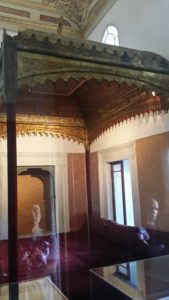

The imperial throne
Four yard
There are several pavilions in the fourth courtyard, as well as a pruning room and a room for the Chief Medical Officer. It was very difficult for foreigners to enter this part of Topkapi. The most beautiful buildings are in the fourth courtyard, built in honor of the conquest of Murat IV. There are summer halls made of wood with masonry walls on the walls, and with Iznik tiles, gilded tent domes and marble floors show the whole essence of Ottoman architecture. The third and fourth yards also have treasuries.

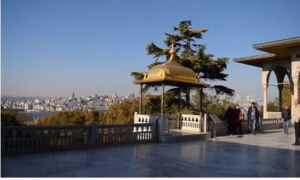
Here are kept relics of weapons, jewelry, the Sultan’s throne. The Revan Pavilion, the Baghdad Pavilion (built to honor the conquest of Baghdad) and the Sunbathing Pavilion between 1635 and 1638 were built in the fourth garden. In addition, there is now a place for the Iftar, the Sofa Pavilion, the Sofa Mosque, and the Chief Doctor’s Room. The fourth courtyard is the Sultan’s garden with pavilions, lookouts, fountains and magnificent views of the Golden Horn Bay, Bosphorus and the Marble Sea. From the garden you can see the most picturesque landscapes in the castle, so this is an ideal place to take pictures at Topkapi Palace. There is the Tulip Garden, a place where the Sultans liked to retreat and immerse themselves in their thoughts. The garden is full of bright colors of fragrant flowers, fruit trees and vineyards. Nearby is the Marble Terrace which offers an incredible panorama of the Bosphorus and the Marble Sea as well as the Golden Horn. We went ashore and looked at the place where the Marble Sea joins the Bosphorus, whirled the galata tower in the distance and smelled the sea, and someone commented that the sultans knew full well what comfort was.

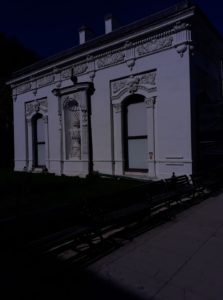

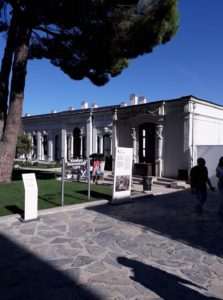
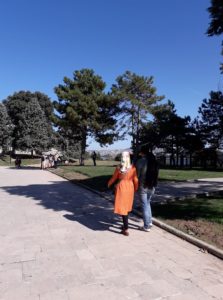
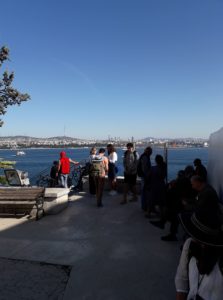

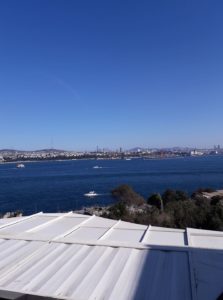

The Turkish Ministry of Defense and police keep treasuries and treasure and valuable archives out of the public eye.
Unlike European courts at the same time, Topkapı could be seen lacking elements of entertainment in the public part of the court. All the ceremonies began with a cruel victory (Qur’an, 75), which wanted to show the difference between them and the festivities in the European courts where they were drunk and entertained.
Fourth courtyard view of Bosphorus
We ended our tour of all the yards of Topkapi Palace with an easy walk back from the fourth to the first yard. With great physical exertion, we went down to the Galata Bridge in the evening, where a cheerful song of Turkish young men with drums was heard, which made us pause, as many other tourists did.
We were trying to determine what era some of the buildings we came across belonged to. We were now looking at the outer walls that surrounded Topkapi, those of the Byzantine period. All these epochs loaded in a relatively small space have been tried to be viewed from our perspective.
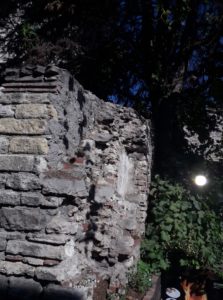
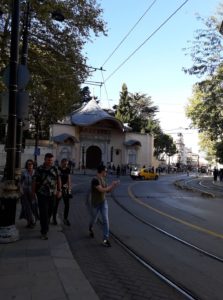

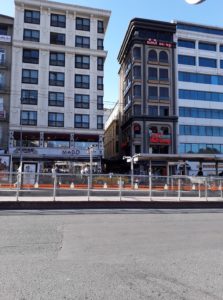
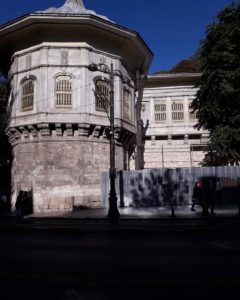

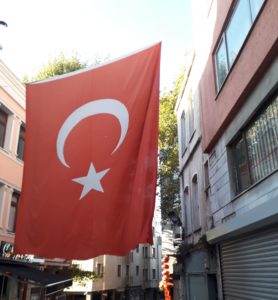
I remembered the towers in the fourth courtyard of the Topkapi Palace, one side looking east – Asia, the other west-Europe, where before us stood the Glata Bridge, which connected the two continents, and in the midst of this bustle, the anglers were completely still they were fishing in their world, and they probably didn’t even think about whether any of them were in Europe or Asia, or past times, because for them it was an everyday life, a hobby or a struggle for their own existence.
balkantimes.press
Napomena o autorskim pravima: Dozvoljeno preuzimanje sadržaja isključivo uz navođenje linka prema stranici našeg portala sa koje je sadržaj preuzet. Stavovi izraženi u ovom tekstu autorovi su i ne odražavaju nužno uredničku politiku The Balkantimes Press.
Copyright Notice: It is allowed to download the content only by providing a link to the page of our portal from which the content was downloaded. The views expressed in this text are those of the authors and do not necessarily reflect the editorial policies of The Balkantimes Press.

